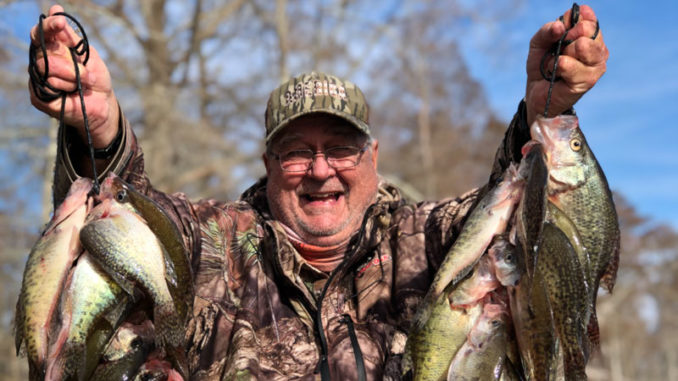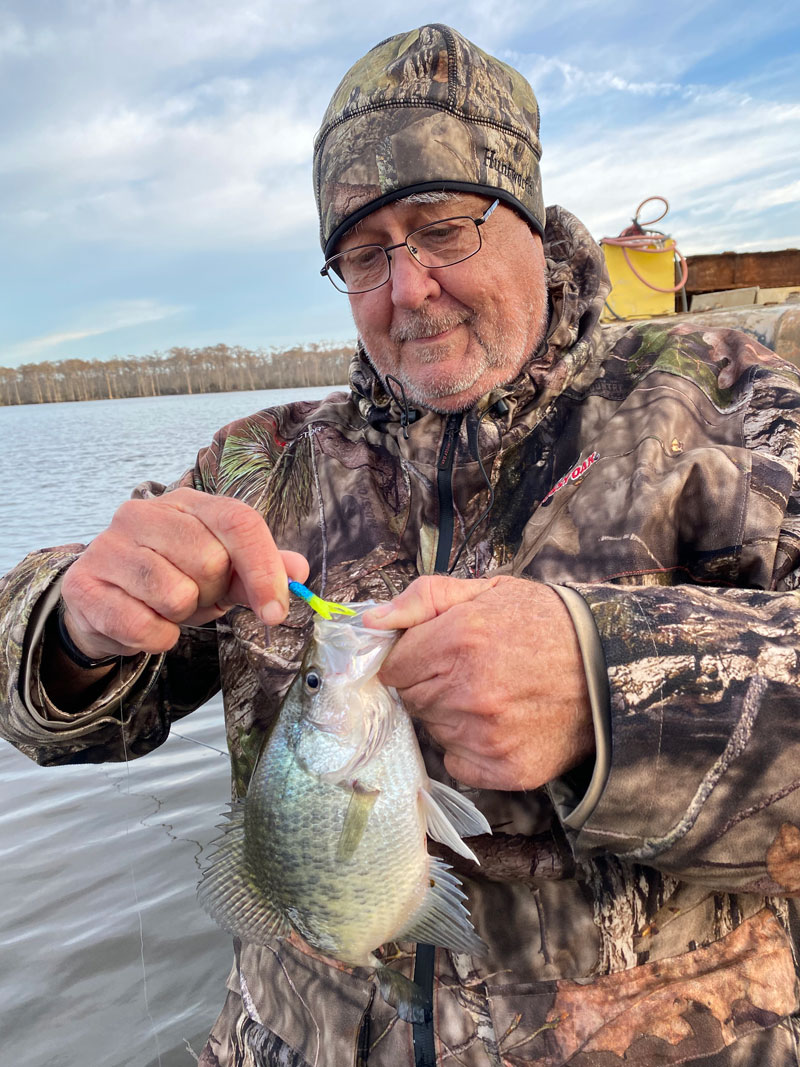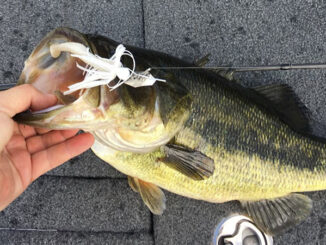
Vertical jig around brush for chilled sac-a-lait
In crappie fishing, many factors can come into play: barometric pressure, sunlight, wind and tide. All are important components in figuring out how sac-a-lait will behave.
Ray Miller of Madisonville has been fishing on the Northshore for more than two decades. From the Tickfaw River to the Pearl River, he has logged thousands of hours on the water figuring out these fish. While many things are worth paying attention to, he said the most-important factor in February is water temperature.
Miller has had a very successful early winter fishing for sac-a-lait in the Tchefuncte River. Water temperatures have been fairly consistent, hovering from the upper 40s to the low 50s. His tried-and-true method of deep-jigging around brush piles in 20 feet of water in the main river has paid off; he’s caught more than 30 fish on several occasions, with one trip yielding 60 slabs.

In addition to numbers, Miller said the size of the fish has been good as well; he has caught several weighing at least 2 pounds.
What’s been working?
Miller uses the side-screen feature of his Humminbird 899 CI sonar unit until he spots a cluster of fish gathered around structure along the outer ledges of the main river.
He also uses a 10-foot jig pole with 10-pound fluorocarbon. His bait of choice is a Bobby Garland jig or a Lil’ Hustler Scale Head tube jig threaded on a 1/16-ounce jighead.
Miller admits loving plastic baits but isn’t too proud to bring along a bucket of shiners just in case.
“Some people may disagree, but it’s my opinion that the three best baits this month are shiners, shiners and shiners,” he said.
When using shiners he ties on a 1/0 hook with two No. 7 split-shot set a foot above the hook.
Like most rivers on the Northshore, the Tchefuncte is affected by tides. If the tide is moving fast, Miller adds a third split -hot to hold the line taught against the current.
Sac-a-lait can be very temperamental. That’s why Miller insists on taking the extra time to approach his next spot.
“You can’t just run up on the spot,” he said. “I like to put the trolling motor down about 30 yards out and quietly approach where I want to fish.”

When he’s close to the spot, he drops his line straight down, just above the submerged structure, and gives the rod a few quick twitches. I doesn’t take long before he knows if crappie are there or not.
“I don’t give a spot too long when I’m fishing it,” Miller said. “They’re either they’re or they’re not. With numerous spots on the river, it’s just a matter of finding the ones that will produce.”
The 60-degree trigger
All of his winter fish have been caught in water that was less than 50 degrees; that’s why anglers need to keep an eye on the water temperatures in February. Miller said the magic number to look for is 60.
“When those water temperatures hit the lower 60s for a few days, I find the fish start to move,” he said.
That’s enough of a change to break the winter pattern and send fish into shallower water to spawn. For most of the country, February is considered winter; in Louisiana, all it takes is one cold front to sputter out, resulting in temperatures climbing into the 80s.
Miller said until that happens, he sticks with what’s working.
“I’m going to stay in that main river and do what’s been working for me all winter,” he said.
Find more fishing reports from Keith Lusher Jr. at NorthshoreFishingReport.com. He can be reached at keith@northshorefishingreport.com.


